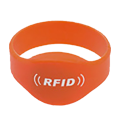Hotel Room Cards: Types and Functions
- Oct 17 , 2025
- By: Guangzhou Zhanfeng Smart Card Technology Co.,Ltd.
- Follow Us
Hotels typically use a variety of cards to facilitate operations and enhance guest experience, with the most common ones including hotel room cards, membership cards, IC cards, and ID cards. Each type of card has distinct naming conventions and specific use cases. This article focuses on elaborating the core roles and functions of these key cards in hotel operations.
As the most basic and essential card for guests, the primary function of hotel room cards is to act as a "digital key" for room access. The usage process is straightforward: after completing the check-in formalities at the hotel front desk, guests receive a room card, which can unlock the corresponding room door by simply swiping it near the door lock. Most traditional room cards adopt a magnetic stripe design on the back, which stores the room number and access authorization information to ensure exclusive access for guests during their stay.
Similar to membership cards used in shopping malls, fitness centers, and restaurants, hotel membership cards serve as a general identification certificate for member guests. Their application scope extends beyond just hotels—they are widely used in various consumer scenarios that require identity verification, including schools, clubs, enterprises, institutions, and social groups. In the context of hotels, membership cards not only confirm the member identity of guests but also often serve as a carrier for enjoying exclusive benefits such as discounted room rates, priority check-in, and cumulative points.
Hotel IC Cards and ID Cards
Compared with room cards and ordinary membership cards, hotel IC cards and ID cards boast more powerful functions, higher security, and greater convenience. Their integrated functions cover multiple scenarios in hotel services, such as point accumulation, card swiping payment, room access, and even access to public facilities like hotel gyms and swimming pools.
The working principle of IC cards (Integrated Circuit Cards) is based on radio frequency identification technology: the RF reader emits a set of electromagnetic waves with a fixed frequency. The IC card is equipped with an LC series resonant circuit, whose resonant frequency matches that of the reader's emitted waves. When the IC card approaches the reader, the LC resonant circuit resonates under the excitation of electromagnetic waves, causing the capacitor inside the card to accumulate charges. A one-way electronic pump at the capacitor's end transfers these charges to another capacitor for storage. When the accumulated charge reaches 2V, this capacitor acts as a temporary power supply, providing the necessary working voltage for other circuits in the card and enabling data transmission—either sending the card's internal information to the reader or receiving data from the reader to complete functions like authorization updates.

 English
English Russian
Russian French
French Spanish
Spanish Portuguese
Portuguese Italian
Italian Arabic
Arabic German
German


